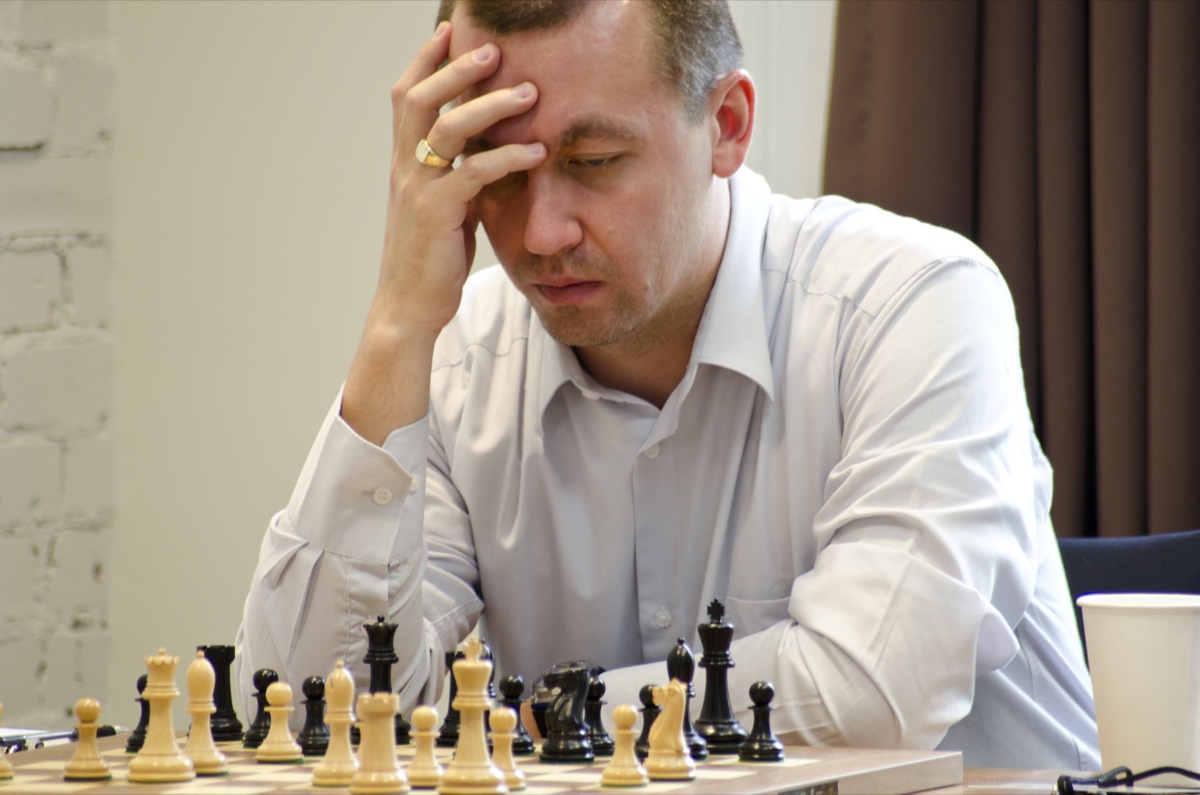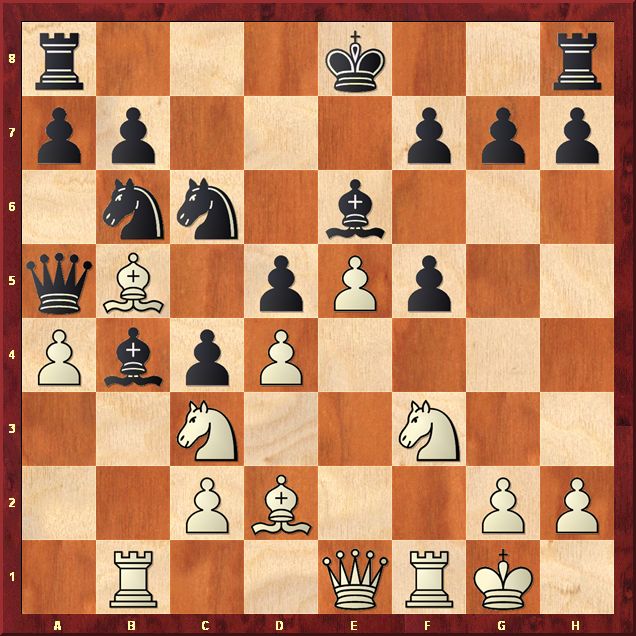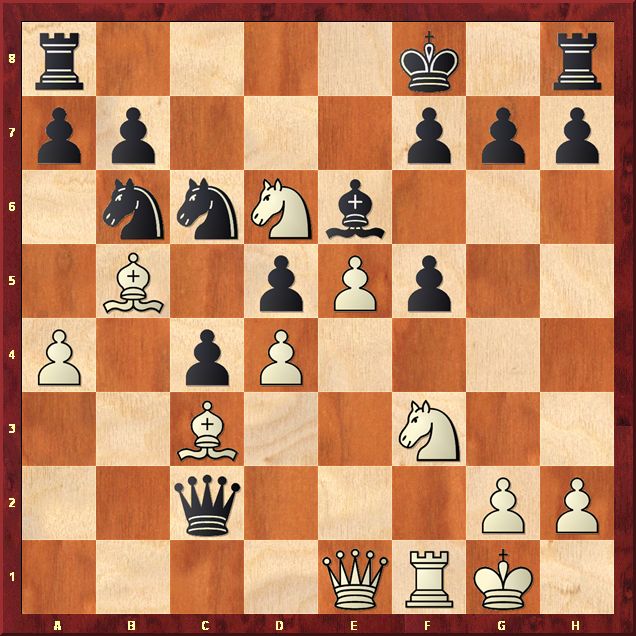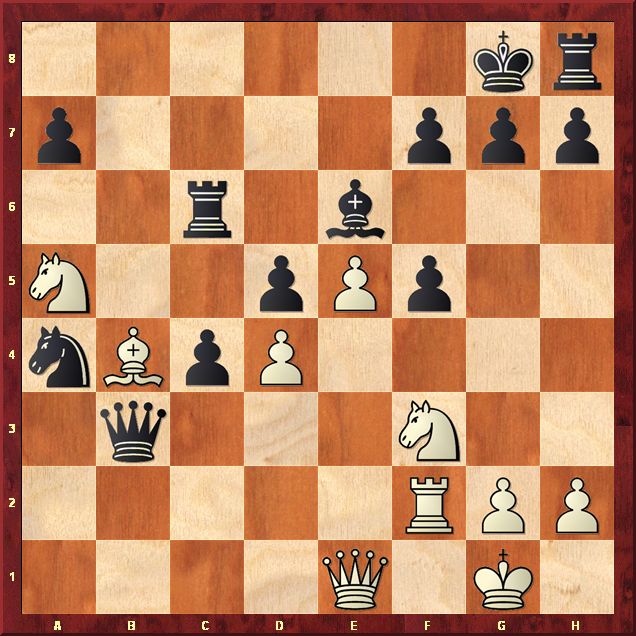It was deja vu all over again for Gata Kamsky as he carved through the field of his opponents with relative ease and defended his title at the 2011 U.S. Chess Championship in St. Louis. Miss, this week. The 36-year-old world championship candidate defeated GM Yuri Shulman, 35, in the final match 1.5 - 0.5. From the $170,000 total prize fund, Kamsky brings home $42,000, Shulman gets $30,000.
In the battle for third place between two 19-year old players, GM-elect Samuel Shankland beat GM Robert Hess 2-1. The top four players qualified from two 8-player preliminary groups. The field included 14 grandmasters and two International Masters.
The 2011 Women's Championship went to IM Anna Zatonskih who beat Tatev Abrahamyan in the final. Both championships were staged by the Chess Club and Scholastic Center of Saint Louis.

Kamsky (pictured above) is the only living American who played a world championship match, losing to Anatoly Karpov 7.5-10.5 in Elista, Russia, in 1996. Shortly after the match Kamsky gave up chess for almost eight years, but made an unbelievable comeback, eventually winning the demanding FIDE World Cup in 2007. He is scheduled to play the Candidates match against Veselin Topalov next week in Kazan, Russia. The winner of the 8-player Candidates matches will face the world champion Vishy Anand of India in 2012.
Kamsky used the U.S. championship as a warm-up, but he felt morally obliged to participate anyway because "a lot of people worked hard to make it happen." He also stressed that it is important to give chances to the young players to play stronger grandmasters and gain experience.
We could already see some benefits. Hess posted an impressive 5.5-1.5 score, the best overall result in the preliminary groups. Shankland, who was on a verge of quitting chess last year, had a tournament of his life, eliminating the experienced Alexander Onischuk, 35, from the final four and finishing third. Roy Robson, 16, was just a half point shy of making it to the top four and it was a memorable experience for IM Daniel Naroditsky, at 15 the youngest participant. It was great to see the veterans Yasser Seirawan,50, Gregory Kaidanov, 51, Alexander Ivanov, 54, and Larry Christiansen, 54, still playing hard.
It was a championship for all ages, from teenagers to fifty-somethings, a wonderful mixture of chess styles and personalities - another triumph for the St. Louis organizers.
St. Louis played an important part in the first official world chess championship in 1886. William Steinitz turned the match around in the Gateway City after a disastrous start in New York. He clinched the title in New Orleans, defeating dr. Johannes Zukertort 12.5 - 7.5, and became the first world champion.
A gambling masterpiece
A great defender, Kamsky likes to build his games slowly, relying on his great positional judgment. Once he gets a small advantage, he is willing to torture his opponent for hours. He has excellent endgame technique. It was surprising to see him play sharply and with flair against Varuzhan Akobian in the French defense, sacrificing pawns and pieces. It seems that both players enjoyed the gambling part of the game. Pawn sacrifices are compared to rolling dice, but grabbing material is also one form of gambling and sometimes you don't know what is more risky. Have a look:
Kamsky - Akobian
French defense
Saint Louis, U.S. Championship 2011
1.e4 e6 2.d4 d5 3.Nc3 Nf6 4.e5 (Steinitz liked this move against the Classical French defense, fixing the pawn structure in the center and getting more space. It avoids the Burn variation, 4.Bg5 dxe4, Akobian likes to play.) 4...Nfd7 5.f4 c5 6.Nf3 Nc6 7.Be3 Qb6 8.Qd2
(Kamsky goes for a pawn sacrifice. The most analyzed and played variation 8.Na4 Qa5+ 9.c3 cxd4 10.b4 Nxb4 11.cxb4 Bxb4+ 12.Bd2 Bxd2+ 13.Nxd2 gives black good compensation for a piece.) 8...Qxb2 9.Rb1 Qa3 10.Bb5 Qa5 (Trying to escape with the queen. Hikaru Nakamura tried twice to survive with 10...cxd4 11.Nxd4 Nxd4 12.Bxd4 a6 but it was an uphill battle against Topalov and Karjakin this year in Monte-Carlo. Enclosing the light bishop with 10...c4, threatening 11...Bb4, forces white to come up with a good plan.) 11.0-0 c4 12.f5 Nb6 (Blocking the exit for the black queen. After 12...Bb4 13.fxe6 fxe6 14.Ng5! Bxc3 15.Qd1 white has numerous threats and a powerful attack for the piece.) 13.Qe1 (Preparing Be3-d2 to harass the queen on a5.) 13...exf5 14.a4 (The black queen jumps out after 14.Bd2 Qa3.) 14...Be6 (After 14...Bb4, the surprising 15.Qg3! Bxc3 [15...Be6 16.Na2!] 16.Qxg7 Rf8 17.Ng5 seem to favor white.) 15.Bd2 Bb4 (The fireworks start...)

16.Rxb4! Qxb4 17.Ne4! ("Beautiful," Kamsky summed up this move. He realized that his knight on d6 can do more harm than the obvious 17.Nxd5 Qb2 18.Nc7+ Kd7 19.Nxa8 Rxa8, giving black more chances.) 17...Qb2
(The black queen has to stay in white's camp where it could be attacked. Retreating with 17...Qe7 does not solve black's problems after 18.Nd6+ and white should win, for example:
a) 18...Kd7 19.a5 Nc8 20.Nxb7+-;
b) 18...Kd8 19.Bg5 f6 20.Nxb7+! Qxb7 21.exf6 gxf6 [21...Kc7 22.Qxe6] 22.Bxf6+ Kc7 23.Be5+ Kc8 24.Bxh8+-;
c) 18...Kf8 19.Bxc6 bxc6 20.Nxf5! Bxf5 [20...Qd7 21.Bb4+ Ke8 22.Nxg7+ Kd8 23.Ng5+-] 21.Bb4+-)
18.Nd6+ Kf8 (After 18...Kd8 19.Bc3 Qxc2 20.Rf2 white wins either after 20...Qd3 21.Nxb7+ Kc7 22.Nc5+-; or after 20...Qb3 21.Nxb7+ Kc7 22.Nc5+-; and 18...Kd7 19.Bc3 Qa3 20.Qd2 Nxa4 21.Bxa4 Qxa4 22.Ra1 wins the queen.)
19.Bc3 Qxc2 (White arrives at a crossroads.)

20.Nxb7 (Kamsky makes a practical decision, forcing Akobian to find the best defense. The objectively better queen chase 20.Rf2 is easy to calculate for black: 20...Qb3 21.Rb2 Qa3 22.Bxc6 bxc6 23.Bb4 and now:
a) 23...Qxa4?! 24.Ne4+ Ke8 [After 24...Kg8 25.Nf6+ gxf6 26.Qg3 mates.] 25.Nc5 Qb5 26.Bc3 the queen is caught again;
b) 23...Qxb2!? 24.Nxc4+ Qxb4 25.Qxb4+ Kg8 26.Nxb6 axb6 and black may have some hope to survive.)
20...Nxa4?! (Black should have tried 20...Nd8!? 21.Nc5, threatening 22. Rf2, 21...f4 22.a5 h6!? [not 22...Nc8 23.Qh4!+-] 23.Rf2 Qg6 24.axb6 axb6 25.Na4 with roughly equal chances.) 21.Bb4+ Kg8? (Objectively, black should have tried 21...Nxb4 22.Qxb4+ Kg8 23.Bxa4 a5 24.Qa3 Qd3 25.Qc1 although the black queen still can't find peace, for example 25...c3 26.Nd6 Rb8 27.Bc2 Qe2 28.Bxf5 and black's position collapses.) 22.Bxc6 (White has a winning advantage.) 22...Rc8 23.Rf2 Qb3 24.Na5 Rxc6 (Forced, to stay in the game.)

25.Nxc6?! (Although this move should also win, the computer analytical engines are screaming for 25.Nxb3 cxb3 26.Qb1 b2 27.Rc2 Rc4 28.Ba3 and the b-pawn is doomed.) 25...h6 26.Ne7+ Kh7 27.Ng5+!

(Kamsky now wins the black queen and keeps attacking chances.) 27...hxg5 28.Rf3 (Threatening 29.Rh3 mate.) 28...g6 29.Rxb3 cxb3 30.Ba3 Rb8 31.Qg3 g4? (Loses nicely. Black had to try 31...b2 32.Bxb2 Rxb2 33.h3 g4.) 32.Qh4+ Kg7 33.Qf6+ Kh7 34.Bc1!

(Black is hopeless against a mating attack on the dark squares , for example 34...b2 35.Qh4+ Kg7 36.Qh6 mate; or 34...Rh8 35.Bh6 Kxh6 36.Qxh8+ Kg5 37.g3 b2 38.Qh4 mate.) Black resigned.
Photo of Gata Kamsky by Jon Strand
Note that in the replay windows below you can click either on the arrows under the diagram or on the notation to follow the game.
